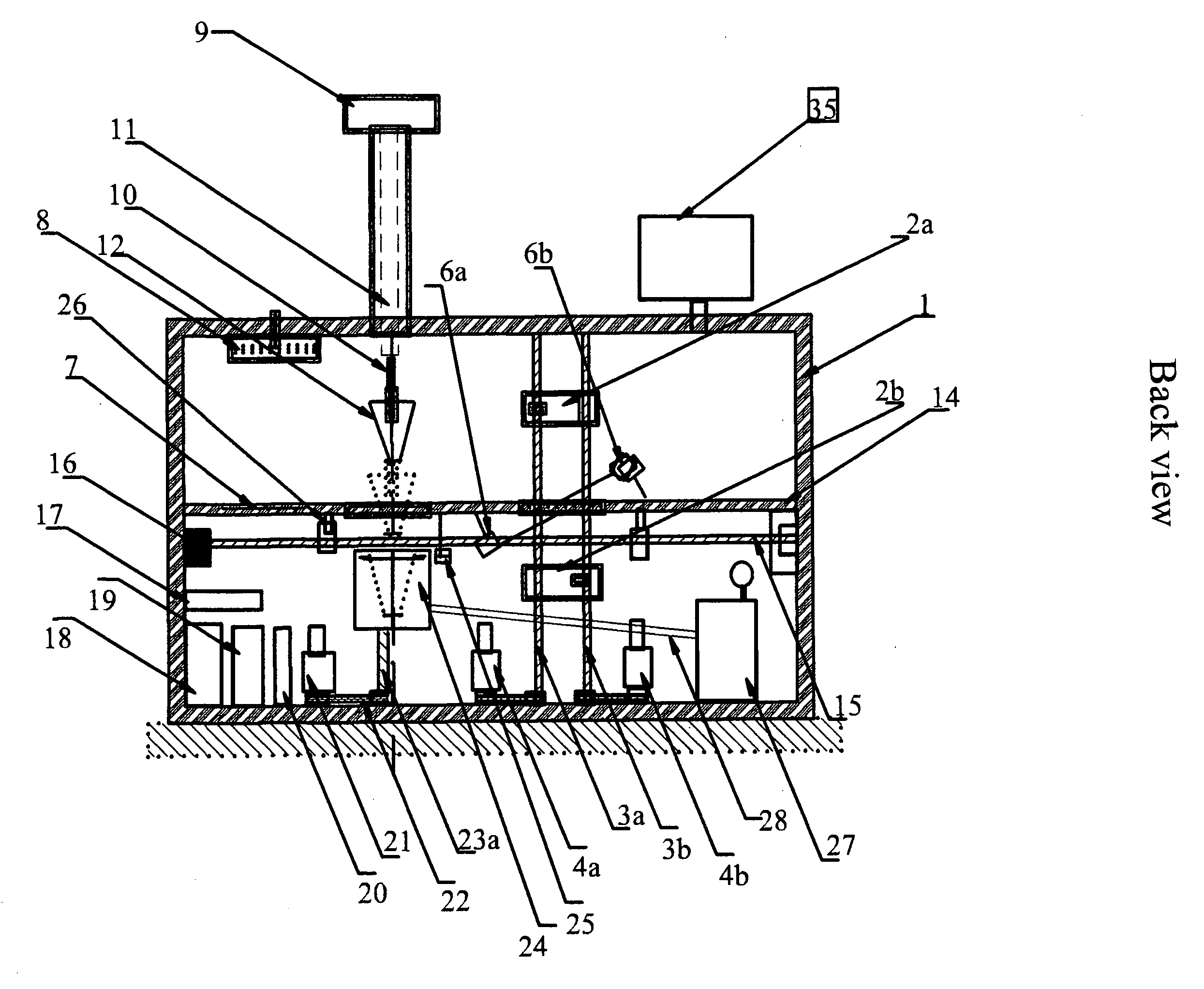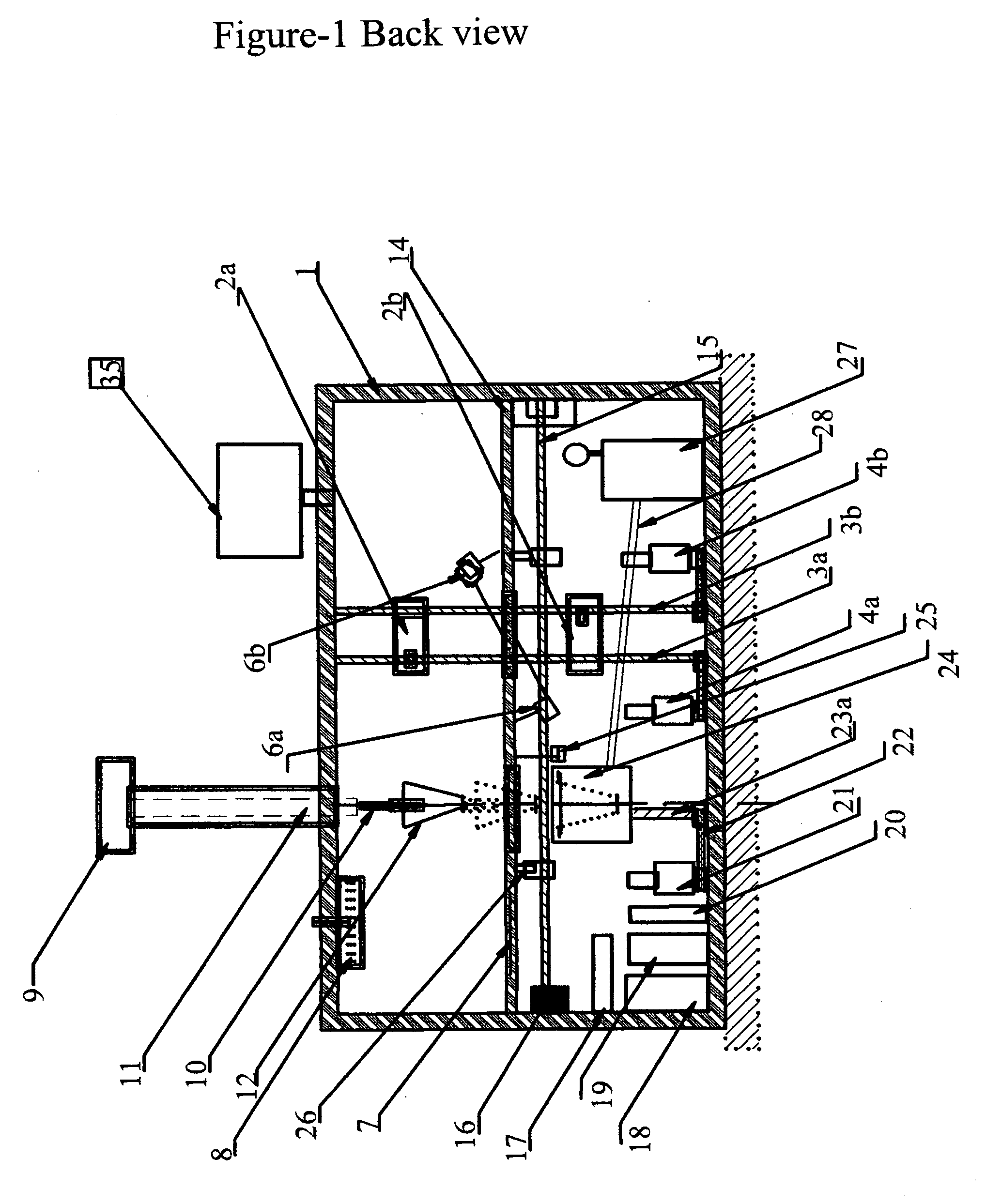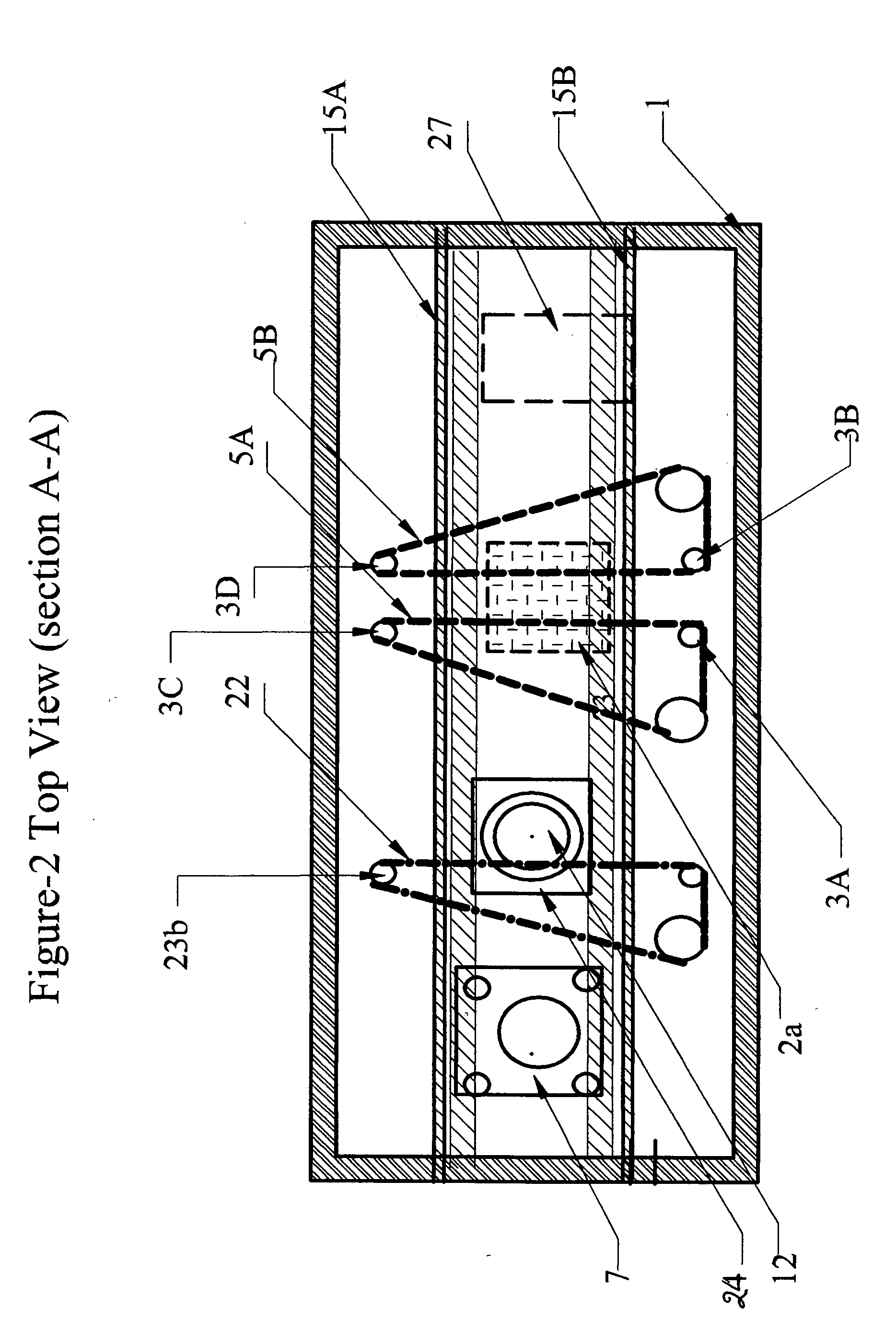Apparatus to determine ability of plastic material to be shaped by thermoforming process
a thermoforming process and thermoforming technology, applied in the direction of material strength using tensile/compressive forces, manufacturing tools, instruments, etc., can solve the problems of large amount of material required to make test sheet stock, inconvenient and difficulty in predicting whether a newly developed material or a slightly adjusted composition is suitable for thermoforming, etc., to achieve easy and quick loading and unloading of samples and precise sheet surface temperature control
- Summary
- Abstract
- Description
- Claims
- Application Information
AI Technical Summary
Benefits of technology
Problems solved by technology
Method used
Image
Examples
second embodiment
[0051] In a second embodiment, the equipment provides for the shaping of heated sheet using the vacuum. In this mode, heated sample in a sample carrying tray moves to forming station underneath the mold 12, motor 21 connected to pinion 23 (a) and 23 (b) via driving belt 22, which in turn lift the vacuum chamber 24 made of perforated metal such as to make vacuum tight contact with sample tray 7 (b). When a firm contact is established, limit switch 25 will be turned-on activating vacuum pump 27 which begins to draw air out of chamber 24 via connecting hose 28 allowing heated sheet to conform to inner surface of vacuum chamber 24. The change in air pressure during vacuum forming is communicated to processor. After pre-set time, vacuum will be released, vacuum chamber will lowered down, and sample tray will move to starting point for unloading formed sample.
third embodiment
[0052] In a third embodiment, the apparatus allows for the pre-stretching of heated sheet prior to forming. When heated sample tray moves underneath the forming piston, makes contact with limit switch 26, motor 21 is activated lifting vacuum chamber 24 by means of pinions 23 and driving belt 22. When vacuum chamber 24 makes firm contact with sample tray 7(b), limit switch 25 is turned-on which activates vacuum pump 27. The exhaust of vacuum pump carrying compressed air is forced through vacuum chamber such that the pre-heated film is stretched. After a pre-set stretch time vacuum pump turns off, the pressure plug 12 descends at pre-set speed shaping stretched sheet in to mold shape. Force value is measured, communicated to data processor and stored.
[0053] In yet another embodiment, the positions of male plug 12 and the vacuum chamber holding female cavity are reversed. When heated sample tray moves over the forming piston and makes contact with limit switch 26, motor 21 is activated...
PUM
| Property | Measurement | Unit |
|---|---|---|
| sag resistance | aaaaa | aaaaa |
| plastic test | aaaaa | aaaaa |
| temperature | aaaaa | aaaaa |
Abstract
Description
Claims
Application Information
 Login to View More
Login to View More - R&D
- Intellectual Property
- Life Sciences
- Materials
- Tech Scout
- Unparalleled Data Quality
- Higher Quality Content
- 60% Fewer Hallucinations
Browse by: Latest US Patents, China's latest patents, Technical Efficacy Thesaurus, Application Domain, Technology Topic, Popular Technical Reports.
© 2025 PatSnap. All rights reserved.Legal|Privacy policy|Modern Slavery Act Transparency Statement|Sitemap|About US| Contact US: help@patsnap.com



